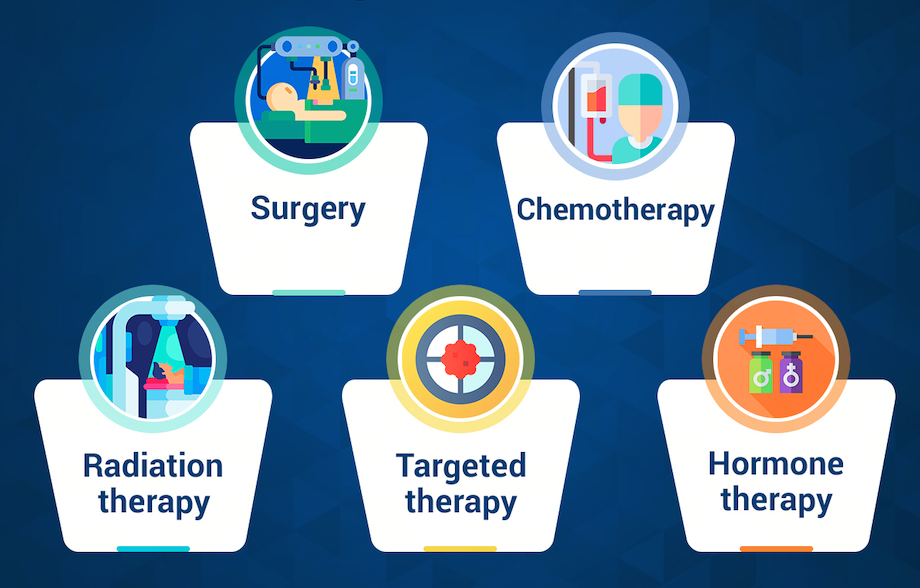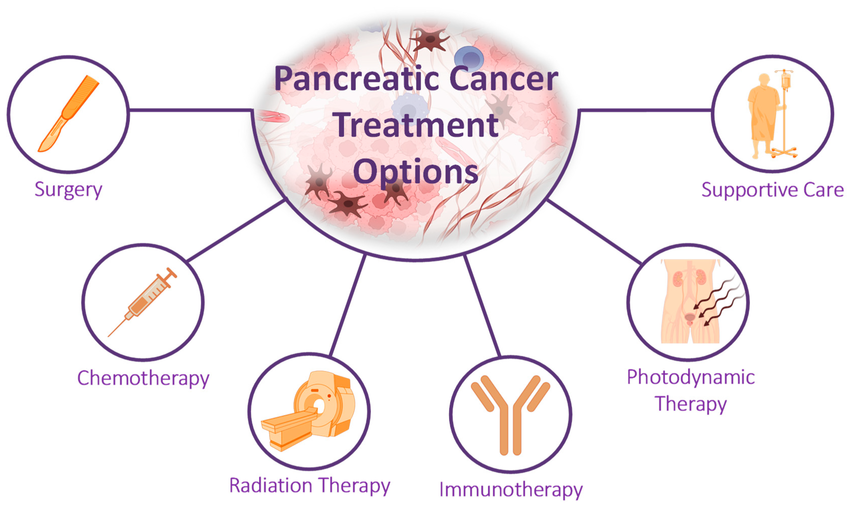
Understanding Uterus Cancer: A Brief Overview
Uterus cancer begins in the cells of the uterus, most commonly in the lining of the uterus known as the endometrium. It can develop into two main types: endometrial carcinoma (the most common) and sarcoma (which is rarer and more aggressive). The majority of uterus cancer cases are diagnosed at an early stage, making it one of the more treatable cancers if caught early.
Staging and Diagnosis:
- Stage 1: Cancer is confined to the uterus.
- Stage 2: Cancer has spread to the cervix.
- Stage 3: Cancer has spread beyond the uterus to nearby structures or lymph nodes.
- Stage 4: Cancer has spread to distant organs.
Common Risk Factors:
- Age (most common in postmenopausal women)
- Hormonal imbalances (e.g., estrogen replacement therapy)
- Obesity and diabetes
- Family history of uterine or other cancers
1. Surgical Treatment Options for Uterus Cancer
Surgery is the primary treatment for most women with uterus cancer, especially in its early stages. The goal is to remove the tumor while preserving as much healthy tissue as possible. By 2025, surgical techniques are expected to be more precise, with reduced risks and faster recovery times due to robotic-assisted surgery and minimally invasive techniques.
Types of Surgical Procedures:
- Total Hysterectomy: Removal of the uterus is the most common surgery for uterus cancer. In some cases, bilateral salpingo-oophorectomy (removal of the ovaries and fallopian tubes) is also performed.
- Lymph Node Dissection: If cancer has spread to the lymph nodes, they may also need to be removed.
- Minimally Invasive Surgery: Laparoscopic or robotic-assisted surgeries allow for smaller incisions, less blood loss, and faster recovery.
Benefits of Surgical Treatment:
- Immediate Results: Surgery is the most direct approach to removing cancer and can provide immediate relief.
- Improved Recovery: With the rise of robotic-assisted and minimally invasive surgeries, recovery times are becoming shorter, and patients experience less pain.
2. Radiation Therapy: Targeting Uterus Cancer Cells
Radiation therapy uses high-energy rays to kill cancer cells or shrink tumors. It is often used after surgery to eliminate any remaining cancer cells, or in cases where surgery is not an option.
Types of Radiation Therapy:
- External Beam Radiation: Radiation is targeted at the pelvis from outside the body.
- Brachytherapy: This involves placing radioactive material directly inside the uterus or near the tumor.
Benefits of Radiation Therapy:
- Targeted Treatment: Radiation allows for targeted treatment of the tumor, minimizing damage to surrounding tissues.
- Post-Surgical Treatment: Radiation is often used as an adjunct to surgery to reduce the risk of cancer recurrence.
3. Chemotherapy for Uterus Cancer
Chemotherapy involves using powerful drugs to kill rapidly dividing cancer cells. It is typically used in advanced cases of uterus cancer, particularly if the cancer has spread beyond the uterus or has a high risk of recurrence.
Common Chemotherapy Drugs for Uterus Cancer:
- Carboplatin: Often used in combination with paclitaxel for advanced or high-risk cancers.
- Doxorubicin: A common chemotherapy drug used to treat cancers that have spread.
Benefits of Chemotherapy:
- Systemic Treatment: Chemotherapy targets cancer cells throughout the body, making it an effective option for advanced stages.
- Combination Therapy: Chemotherapy is often combined with other treatments, such as radiation or targeted therapies, to increase effectiveness.
4. Targeted Therapy: Precision Treatment for Uterus Cancer
Targeted therapy is a newer treatment approach that aims to target specific molecules involved in cancer cell growth. This method can be more precise than traditional chemotherapy, often resulting in fewer side effects.
Types of Targeted Therapies for Uterus Cancer:
- PI3K/AKT/mTOR Inhibitors: These drugs target a specific pathway that is often overactive in uterine cancer cells.
- Angiogenesis Inhibitors: These drugs block the formation of blood vessels that tumors need to grow, potentially stopping the cancer from spreading.
Benefits of Targeted Therapy:
- Fewer Side Effects: Because targeted therapies focus on cancer cells, they tend to cause fewer side effects than traditional chemotherapy.
- Effective for Advanced Cancer: Targeted therapies have shown promise in treating more aggressive and metastatic forms of uterus cancer.
5. Immunotherapy: A New Frontier in Uterus Cancer Treatment
Immunotherapy is revolutionizing cancer treatment by boosting the body’s own immune system to fight cancer. In 2025, immunotherapy will become a more widely used option for uterus cancer, especially for advanced cases.
Types of Immunotherapy for Uterus Cancer:
- Checkpoint Inhibitors: These drugs, such as pembrolizumab (Keytruda) and nivolumab (Opdivo), help the immune system recognize and attack cancer cells.
- Monoclonal Antibodies: Herceptin (trastuzumab) and other antibodies can be used to target specific proteins that are overexpressed in certain types of cancer.
Benefits of Immunotherapy:
- Boosting Immune Response: Immunotherapy enhances the body’s natural defenses to target and destroy cancer cells.
- Long-Term Effectiveness: Many patients have shown long-lasting remissions with immunotherapy, even in advanced stages of cancer.
6. Hormone Therapy for Uterus Cancer
Hormone therapy is often used to treat certain types of uterus cancer that are hormone-receptor-positive, meaning they grow in response to estrogen.
Types of Hormone Therapy:
- Progestins: These synthetic hormones block estrogen and slow the growth of cancer cells.
- Aromatase Inhibitors: These drugs lower the amount of estrogen in the body, slowing the growth of hormone-sensitive tumors.
Benefits of Hormone Therapy:
- Targeted Action: Hormone therapy is particularly effective in estrogen-dependent cancers, offering a tailored treatment option.
- Reduced Side Effects: Compared to chemotherapy, hormone therapy typically causes fewer and milder side effects.
Uterus Cancer Treatment Summary
| Treatment Type | Common Approaches/Drugs | Effectiveness | Side Effects |
|---|---|---|---|
| Surgery | Total Hysterectomy, Lymph Node Dissection | High for localized cancers | Pain, infection, recovery time |
| Radiation Therapy | External Beam Radiation, Brachytherapy | Effective post-surgery | Fatigue, skin irritation |
| Chemotherapy | Carboplatin, Doxorubicin | Effective for advanced stages | Nausea, fatigue, hair loss |
| Targeted Therapy | PI3K Inhibitors, Angiogenesis Inhibitors | Effective for advanced cases | Mild side effects |
| Immunotherapy | Checkpoint Inhibitors, Monoclonal Antibodies | High for advanced cancer | Fatigue, skin reactions |
| Hormone Therapy | Progestins, Aromatase Inhibitors | Effective for hormone-sensitive tumors | Hot flashes, fatigue |
The landscape of uterus cancer treatment is rapidly evolving, bringing hope and better options to women affected by this disease. With continuous advancements, the future for uterus.
Uterus Cancer Treatment in 2025: The Future of Care
By 2025, uterus cancer treatments will continue to evolve with a focus on more personalized and less invasive approaches. Genetic testing, precision medicine, and combination therapies will become more common, allowing doctors to tailor treatments to the specific genetic makeup of a patient's cancer.
What Patients Can Expect in 2025:
- More Targeted and Personalized Treatments: With advances in genomic testing and targeted therapies, doctors will be able to choose treatments that are best suited for each individual.
- Improved Survival Rates: Thanks to breakthroughs in immunotherapy and personalized medicine, survival rates for uterus cancer will continue to improve.
- Fewer Side Effects: Minimally invasive treatments and more precise therapies will reduce the side effects commonly associated with traditional treatments like chemotherapy.
Conclusion
Uterus cancer treatment options in 2025 are poised to be more effective, personalized, and less invasive. With advancements in immunotherapy, targeted therapy, and minimally invasive surgeries, women diagnosed with uterus cancer will have a greater chance of successful treatment and improved quality of life. As research continues, the future of uterus cancer treatment looks brighter, with more options for patients to manage and overcome the disease.



